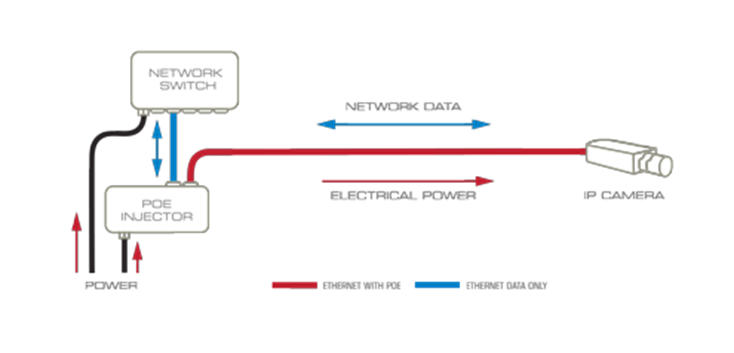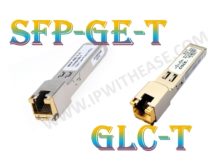Google ADs
Power over Ethernet, also known as POE, is a kind of technology that allows network cables to also carry electricity in order to power devices.The original IEEE 802.3af PoE standard provides up to 15.4 W of DC power (minimum 44 V DC and 350 mA) on each port. Only 12.95 W is assured to be available at the powered device as some power dissipates in the cable.
Following are the terminologies used in the PoE network –
- PD – Powered Devices – PDs are end devices that can accept the power transmitted over Ethernet Cat-5 cable.
- PSE – Power Source Equipment – PSEs add power to the ethernet cable.
- Midspan device – These are power injectors that stands between the standard ethernet switch and the end device.
- Endspan devices (PoE Switches) – These are Ethernet Switches that includes the circuit to inject power to the ethernet cable.
POWER OVER ETHERNET PROVIDES :
- OPEX and CAPEX savings – by reducing the time and expense of having electrical power cabling installed. Network cables do not require a qualified electrician to fit them, and can be located anywhere.
- Flexibility – without being tethered to an electrical outlet, devices such as IP cameras and wireless access points can be located wherever they are needed most, and repositioned easily if required.
- Safety – POE delivery is intelligent, and designed to protect network equipment from overload, underpowering, or incorrect installation.
- Reliability – POE power comes from a central and universally compatible source, rather than a collection of distributed wall adapters. It can be backed-up by an uninterruptible power supply, or controlled to easily disable or reset devices.
- Scalability – having power available on the network means that installation and distribution of network connections is simple and effective.
- Portability – Install end-devices where it is hard to get power. For example, you can install a wireless access point in the ceiling, where you cannot find power outlet.
- Easy Maintenance – You can restart the end-device remotely. No need to press the power button to reset the equipment. You can easily move the end-devices wherever you can lay a LAN cable.
- Simplicity – You need to run only ethernet cable to the end devices, which eliminates the cable clutter.
- Safer – No AC power is involved, as you don’t need to install A/C power outlet for the end-devices.
SOME TYPES OF DEVICES POWERED BY POE INCLUDE –
- VoIP phones
- IP cameras including pan–tilt–zoom cameras
- Wireless access points
- IPTV decoders
- Network routers
- A mini network switch installed in distant rooms, to support a small cluster of ports from one uplink cable. (Mini-switches do not usually provide PoE on their output ports.) (Many modern VoIP phones include a two-port mini-switch that can provide a network connection for a nearby computer.)
- Network Intercom / Paging / Public address systems and hallway speaker amplifiers
- Wall clocks in rooms and hallways, with time set using Network Time Protocol
- Outdoor roof mounted radios with integrated antennas, 802.11 or 802.16 based wireless CPEs (customer premises equipment) used by wireless ISPs.
- Industrial devices (sensors, controllers, meters etc.)
- Access control and Help-points (intercoms, entry cards, keyless entry, etc.)
- Lighting controllers and LED Lighting fixtures[14]
- Stage and Theatrical devices, such as networked audio breakout and routing boxes
- Remote Point of Sale (POS) kiosks
- Physical Security devices and controllers
- Inline Ethernet extenders
ABOUT THE AUTHOR

Founder of AAR TECHNOSOLUTIONS, Rashmi is an evangelist for IT and technology. With more than 12 years in the IT ecosystem, she has been supporting multi domain functions across IT & consultancy services, in addition to Technical content making.
You can learn more about her on her linkedin profile – Rashmi Bhardwaj




